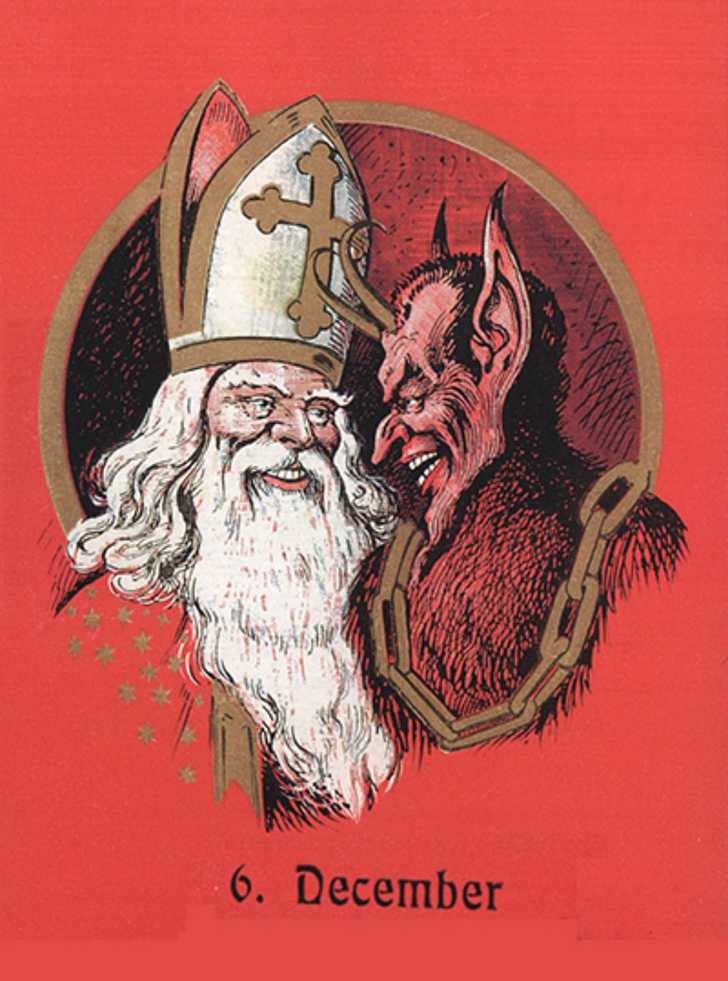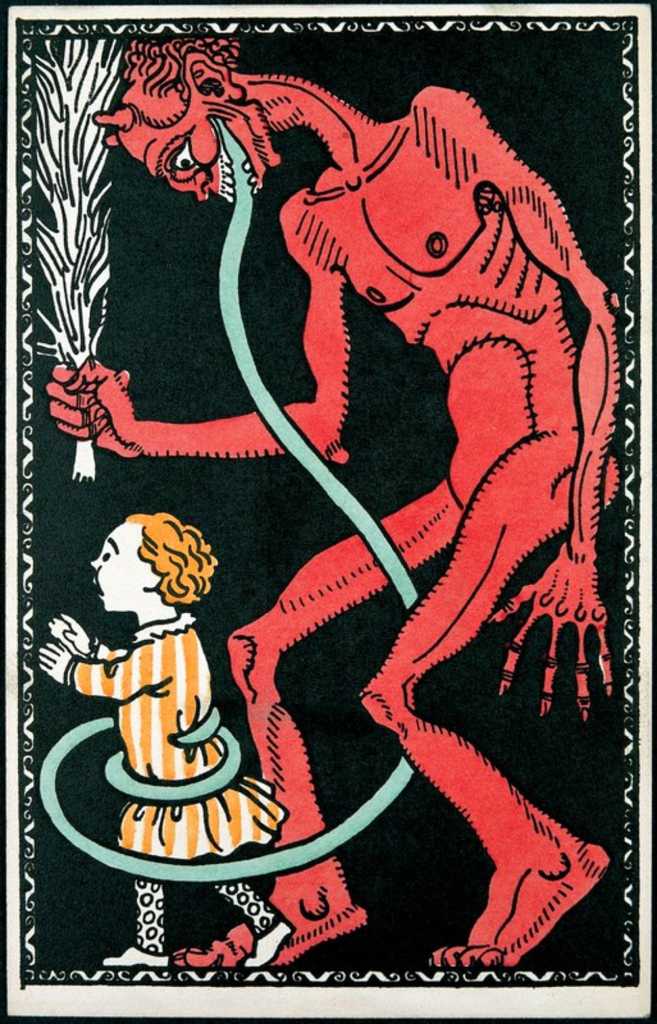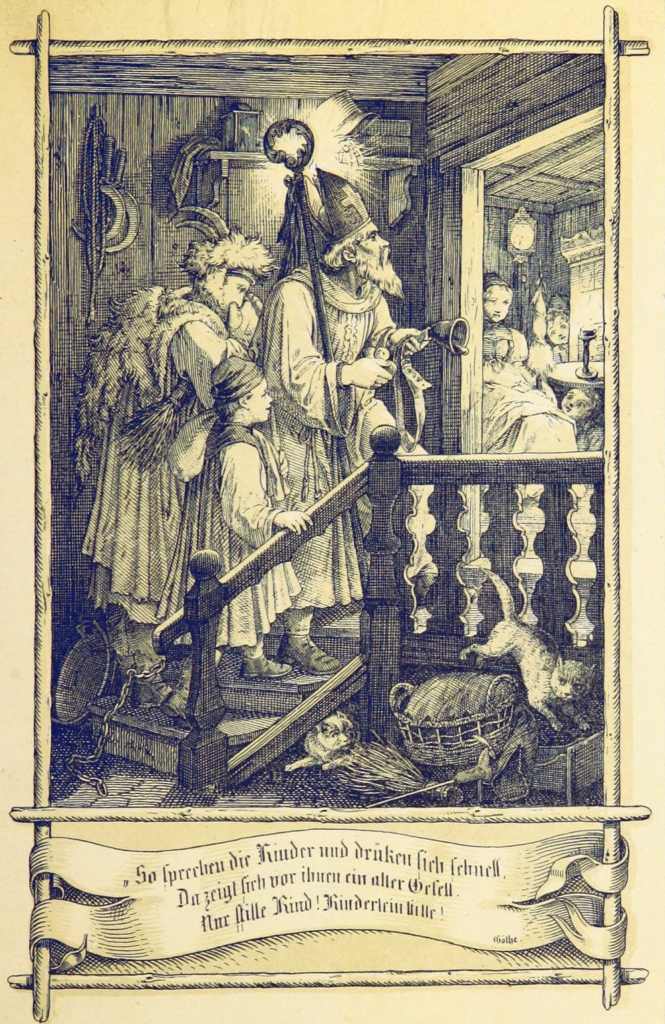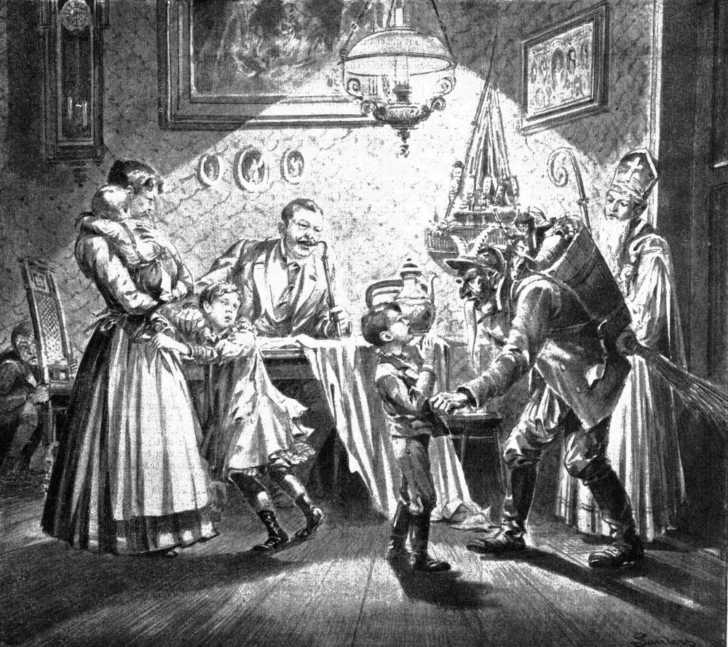Santa’s Evil Helper Has Been Scaring Children for Centuries
Once upon a time Christmas was absolutely terrifying.
Every day has a night, every story has two sides. It turns out, even Christmas has a scary element to it. In many parts of the world Saint Nicholas is seen as a magical and largely benevolent figure, delivering gifts to good children and helping the poor. When he’s not busy traveling the globe to help others, Saint Nicholas is in cahoots with a dangerous demon -his nefarious helper, Krampus- who represents the truly dark side of Christmas. Across Europe the “naughty” list is enforced well ahead of Christmas by this otherworldly horned creature.

The story of Krampus begins with Saint Nicholas. In countries where the saint has traditionally been revered, such as Germany, Russia, Hungary, Italy, and Slovenia, Krampus has been there with jolly old Saint Nick (though in these countries Santa is often depicted as a completely different entity to Saint Nicholas). Some depictions even cast the Krampus and Saint Nicholas as friends. In what is arguably a much more sober celebration of Christmas, Krampus is often shown as coming to children’s homes alongside Saint Nicholas, and he is there to dole out a special brand of Christmas justice.
Some speculations are that Krampus-like creatures even predate Santa himself. Krampus is supposed to be the son of the Norse god, Hel, ruler of the underworld. The traditions of Perchten, Black Peter, Schmutzli, and Pelznickel are all related to Krampus and are celebrated in Alpine regions of Europe.
The name Krampus comes from the German word “krampen” which means claw.

According to folktales that go back hundreds of years Krampus is part goat, part devil, and part man. His supernatural powers extend to being able to tell if children have been lying and to ferret them out even if they hide. These terrifying stories were told to children so that they would behave and many kids were appropriately scared stiff at the prospect of a Yuletide visit from Krampus.
Krampus is often depicted with horns and a long tongue, sometimes with cloven feet. He often is shown carrying rope, chain, switches, a pitchfork, or other implements to help him catch and punish naughty children. Much as Santa is depicted with a heaving bag of presents slung over his shoulder, so is Krampus depicted with a bundle of bad children on his back- who he has stolen from their beds and now carries off into the night.

Krampusnacht, otherwise known as December 5th, is the day that Krampus is said to make his rounds. This is before midnight, at which point it is December 6th, the Feast of Saint Nicholas. In many European countries the 6th is when children wake up to find the goodies that were left in their shoes by Saint Nick- coins, candies, and/or small trinkets.
But, on Krampusnacht, Krampus comes to punish wicked children. Once the bad children were identified, Krampus was thought to drag the children to the underworld. What a cheerful way to celebrate the holidays!
Beginning in the 1930s the tradition of Krampus was seen as too evil, too pagan, and too terrifying for the modern era and so began a period of breaking with this scary legend. However, in the past few decades many small towns have brought back Krampusnacht and the tradition of giving out Krampus-themed holiday greeting cards.

In many locales today it is customary for the village men to dress up like Krampus and visit the families or walk through the village in a Krampuslauf (or Krampus Walk), culminating in a bonfire. Even some U.S. cities in recent years have embraced the tradition of Krampusnacht.
SKM: below-content placeholderWhizzco for DOT

